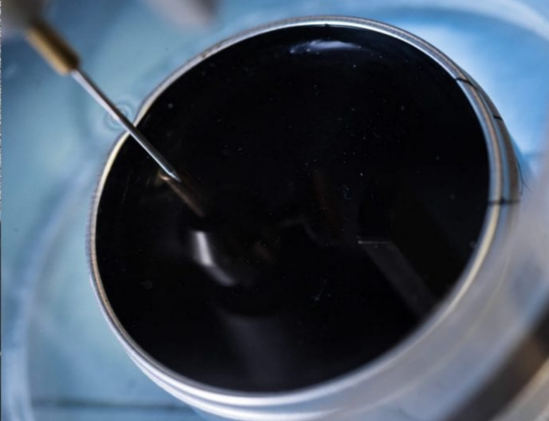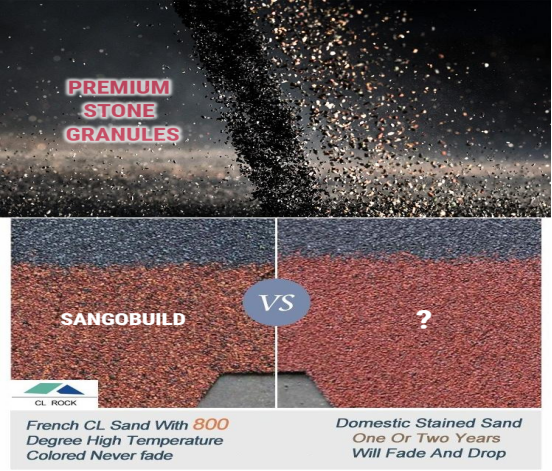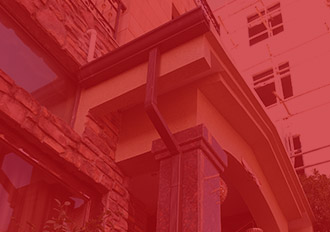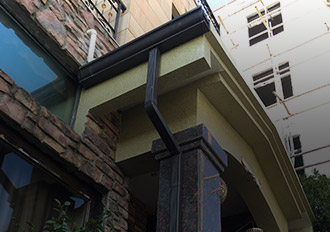THE LATEST IN ROOFING
Asphalt shingles are still the main roofing option in many countries and they can be found on roofs in many countries around the world. Regardless of color or style, they are all manufactured in basically the same way in a continuous web process, using a short list of key raw materials. So what exactly goes into an asphalt roofing shingle anyway?
As mentioned, the manufacturing process uses a continuous web or sheet which provides the foundation upon which the asphalt and other materials are applied. Asphalt roofing shingles are reinforced with a thin fiberglass mat, made from glass fibers of specific length and diameter bound together with the help of stable resins and binders. The fiberglass is wound into large rolls at the fiberglass mill, which are then “unwound” at the start of the roofing shingle manufacturing process.
Asphalt is the main water-resistant ingredient in shingles. The asphalt used is an end-product of oil refining and, although somewhat similar in origin to road asphalt, it is processed to a higher degree of toughness needed for asphalt shingle performance. The roofing asphalt has to be “oxidized” by blowing air through the hot asphalt, increasing its viscosity. But the air blowing process must be precise – too much and the shingles can be brittle, too little and the shingles may be too soft and prone to scuffing if installed in hot weather. A fine mineral powder is mixed with the asphalt to increase weather resistance and enable the installed shingle layer to meet the highest standards for resistance to fire hazards. The mineral-fortified asphalt “coating” is applied to the fiberglass mat on top and bottom.

The most visible aspect of asphalt roofing shingles is the stone granule surfacing. Hard rock with certain physical properties is crushed and screened to exact granular size specifications. In the part of the shingle not exposed to view, the granules are applied as is, in their natural stone-colored state. The granules (sometimes referred to as ‘grit’) are processed into a variety of colors via ceramic firing to give them the long-lasting colors used on the exposed part of the shingle. Some shingles feature an algae-resistant granule that helps inhibit discoloration caused by blue-green algae. As well, special “reflective” granules can be used to make roofing shingles that reflect a higher percentage of the sun’s heat energy. Such shingles are required by code in certain regions.
Close-up of ceramic granules, a critical part of what shingles are made of.

To bond the shingles together on the roof, spots of a thermally-activated asphalt sealant are applied to the shingles (some shingles have the sealant positioned on the top surface, while on other shingles, the sealant is located on the bottom). If the shingles are multi-layer laminated shingles, like most shingles installed today, a similar material called laminant is used to adhere the shingle layers together at time of manufacture. The top layer of a typical laminated fiberglass shingle is called the dragon tooth as it simulates an exaggerated tooth appearance; the bottom layer is called the shim. These asphaltic adhesives are specially engineered to ensure they activate at the desired temperature ranges and hold their bond through the rigorous shingle installation process in the case of laminant, and also during wind events and other roof stresses.
Since the asphalt coating on the roofing shingle is itself a sticky material, the bottom side of the product needs to be covered with something to keep the shingles from sticking to the process rolls during manufacturing, and from sticking together in the package. In the roofing industry, this material is known as backsurfacing. If you look at the back of an asphalt shingle, you can easily see what it is – a fine mineral powder, often sourced from limestone-type rock or fine sand.
The final asphalt roofing shingle component is one that used to cause a bit of confusion in the amateur roofing community. Mentioned above are the small spots of asphalt sealant that, with sufficient solar heat, will bond the shingles together. When shingle bundles are stored outside in summer or in a hot warehouse, what keeps the sealant from premature activation and sticking all the shingles together right in the package? A material called “release film”. It looks like a shiny plastic tape about an inch or so wide, most often located on the back of the shingles. The release film does its job only while the shingles are in the package. Once they’re installed, the film serves no purpose at all and just stays on the back of the shingle. However, if it’s peeled back (often not so easy to do since it is not designed to be removed), naturally the shingle coating asphalt underneath looks black and shiny, and is a bit sticky. And so, for many years, some rookie installers thought peeling off the release film exposed sealant that was needed for shingle adhesion on the roof, but that’s simply not true.
So, although there is a short list of raw materials in asphalt roofing shingles, each serves a key purpose. They are selected, processed and designed to work together to make a roofing material that is, weight for weight, among the best value options available.
Sango-build is a leading roofing material manufacturer in China, offering high-quality, ISO-certified products and a complete range of roofing system materials. With advanced technology, large-scale production, and continuous R&D, we provide competitive solutions supported by a nationwide sales and service network. As a technology-driven and innovative brand, Sango-build focuses on quality, reliability, and excellent customer service.



REQUEST A QUOTE
Copyright © Hangzhou Singer Building Materials Co., Ltd. All Rights Reserved |
Sitemap
| Powered by 
SEOKeywords:Roof Tile ManufacturerRoof Shingle ManufacturerAsphalt Shingle SupplierRain Gutter CompanyShingle Roofing CompanyWaterproof Tape For RoofPressed Steel Roofing TilesRain Gutter SystemGray Asphalt ShingleStone Coated Metal Roofing Manufacturer